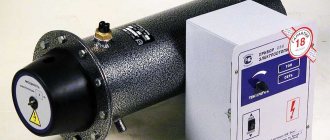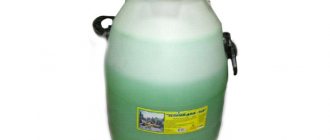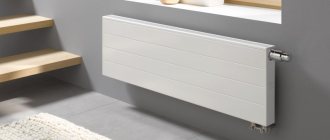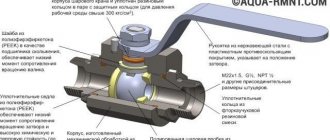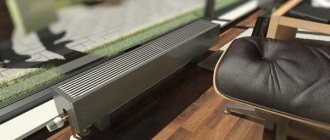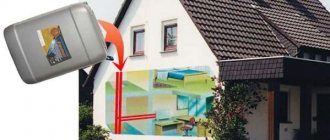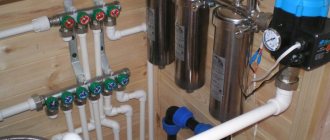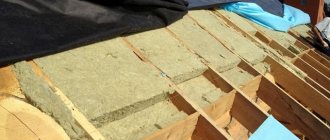Temperature standards in residential premises are established in order to ensure comfortable conditions for human life during the cold season.
Heating in apartment buildings is provided by public utilities. Unfortunately, they do not always adhere to current legislation. If the standard temperature in the apartment is not observed, then its owner has the right to file a complaint with the relevant government service.
Standard temperature in residential premises
Today, the procedure and specifics of central heating are regulated by SanPiN documents. All necessary data is collected in Resolution No. 354 of 05/06/2011. If necessary, a person can go to court at any time if these norms and rules are not observed.
The standard temperature in an apartment according to SNIP is set as follows:
- Not less than 18˚С.
- In the corner room at least 20˚C.
- Temperature reduction by 3˚C at night is allowed.
The heating devices used in the apartment must also comply with sanitary standards. For example, the temperature of a water heater cannot be more than 90˚C.
Applications to SanPiN 2.1.2.2645-10
Lighting standards for adjacent areas
| Illuminated areas of territories | Average horizontal illumination at ground level, lux |
| Transitional alleys and roads, bicycle paths | 4 |
| Internal service and firefighting passages, sidewalks and entrances | 2 |
| Parking lots, utility areas and waste disposal areas | 2 |
| Walking paths | 1 |
| Physical education grounds and playgrounds for children | 10 |
Factors affecting the temperature in the apartment
The air temperature in a living room in winter is important. It is formed not only through the influence of heating devices. The following factors should also be taken into account:
- Climatic conditions of a particular region. The minimum temperature plays an important role.
- Season. The premises are heated not only in winter. The devices also work in spring and autumn. At the same time, temperature indicators during this period are different.
- Human factor or individual preferences.
- Materials that were used to build the house. Today, quite often an additional layer of insulation or waterproofing is used.
The permissible wall temperature in an apartment, according to current standards, should not be lower than 20° degrees. Otherwise, it will not be possible to create comfortable living conditions in the room. It is also affected by the weather and dew point.
Comments: 5
Your comment (question) If you have questions about this article, you can tell us. Our team consists of only experienced experts and specialists with specialized education. We will try to help you in this topic:
Author of the article: Klavdiya Treskova
Consultant, author Popovich Anna
Financial author Olga Pikhotskaya
- Ray
01/22/2022 at 22:45 In an apartment building, an OPU PO 261-FZ was installed, last summer the device was taken out of service (the reasons are not given, the device is broken), but we are still paying in installments for the installation and maintenance of a non-working device.
Question: -Should we pay for this non-working device? -How should you pay for heating in this case? Reply ↓ - Yuri
12/22/2021 at 12:45Hello dear experts. Please answer, does the heating supplier have the right to charge payment according to the standard 2 weeks before the start and 2 weeks after the end of the 8-month heating season if a common building heat meter is installed? It turns out that we pay for 8 months according to the meter and the ninth month according to the standard, with the exception of 3 months of summer. Thank you for your answer.
Reply ↓
- Irina
11/22/2021 at 10:08 amIf an apartment building receives coolant from the boiler room, but an additional boiler is installed in the house, how does this affect the amount of payment for heat? Is it possible to somehow control the accuracy of the calculations?
Reply ↓
Anna Popovich
11/25/2021 at 7:18 pmDear Irina, when preparing hot water using the in-house engineering systems of an apartment building (in the absence of a centralized preparation of hot water), the amount of payment for hot water supply is calculated based on meter readings and the corresponding tariffs for cold water and fuel used to prepare hot water. At the same time, the costs of maintaining and repairing in-house engineering systems used for preparing hot water are included in the fee for maintaining and repairing residential premises.
Reply ↓
09.13.2021 at 12:59
The house has a common heating supply meter. There is no countdown counter! how the heat consumption should be calculated.
Reply ↓
Temperature standards in various rooms
The optimal temperature in an apartment is a subjective concept that depends on the individual preferences and habits of the owner. The sensations should not cause discomfort. Otherwise the person will feel bad.
Temperature indicators are considered acceptable if they comply with those established by current legislation:
• Any residential type premises - at least 18° C. • The room between two neighboring apartments - at least 16° C. • Kitchen - at least 18° C. • Toilet, bathroom - at least 18° C. • Entrance lobby or staircase cage - at least 14° C. • Storage room - at least 12° C.
In our separate article, you can also find out the recommended indoor humidity standards. These standards also significantly affect a person’s comfortable perception of the indoor microclimate.
The influence of humidity on a person’s comfortable state at the same temperature
The essence of the work of the IPU
An individual meter, which is connected to the heating system, takes into account heat energy consumption in the form of calculating the difference between the temperature achieved in the room and the coolant flow rate. Before installing IPU in your apartment, determine which heating system wiring in your high-rise building is vertical or horizontal.
The meters are attached directly to the heat supply pipe. If you have a vertical distribution system in a high-rise building, you will have to install one metering device for each pipe, and this is a very expensive undertaking. Each room will require a separate meter. There is no such problem with a horizontal system; only one device is enough. If the heating system is a riser system, distributors can be installed on the radiators. They calculate coolant flow by calculating the temperature difference in the room and from the surface of the radiator.
As a rule, high-rise buildings built after 2000 have a horizontal heating system. Therefore, it will be cheaper to install an IPU in a new building than in Soviet-built apartments. After installing the meter, the craftsmen seal it to prevent fraudulent activities on the part of residents or tenants.
Find out also how to save on electricity and pay utilities without commission.
5 / 5 ( 2 voices)
about the author
Klavdiya Treskova - higher education with qualification “Economist”, with specializations “Economics and Management” and “Computer Technologies” at PSU. She worked in a bank in positions from operator to acting. Head of the Department for servicing private and corporate clients. Every year she successfully passed certifications, education and training in banking services. Total work experience in the bank is more than 15 years. [email protected]
Is this article useful? Not really
Help us find out how much this article helped you. If something is missing or the information is not accurate, please report it below in the comments or write to us by email
Ideal temperature in a child's room
Pediatric sources advise paying close attention to your baby’s temperature. Overheating or hypothermia can negatively affect its general condition. The temperature in the child's bedroom should be 18°-20° C. Thanks to this, all biochemical processes in his body will proceed normally.
Dr. E.O. Komarovsky warns that the increase is dangerous and can lead to disruptions.
However, it is necessary to increase the intensity of the heating system for a newborn who was born ahead of schedule. For its development, it is necessary to create certain conditions, which the pediatrician will tell parents in more detail.
Optimal temperature during the heating season
Residents of our country observe an increase in utility bills every year. At such a moment of crisis, they are paying a significant part of the budget and want to know that they will be in comfortable conditions in the winter. Unfortunately, public utilities do not always do their work conscientiously. That is why it is important to know what the temperature in the apartment should be during the heating season in the apartment.
The relationship between the owner of this service is regulated by GOST R 51617-2000. It specifies each period of the year and general technical conditions.
In winter, it is necessary to adhere to the range from 18° to 25° C.
If you deviate from the norm, it is difficult to imagine comfortable living in an apartment.
The importance of maintaining a comfortable temperature
To create comfortable conditions, it is recommended to keep the temperature at 22° C. An increase or decrease causes irreparable harm to the body.
The heat in the room creates a favorable environment for the growth and development of bacteria harmful to the human body. At the same time, normal temperature does not impair heart function. The heat thickens the blood and forces the internal organs to work intensively. Constant exposure leads to dehydration, which provokes nervous tension.
Hypothermia or hypothermia quite often acts as a trigger for the development of a cold. It is important that your body temperature does not fall below 36 degrees. Hypothermia is especially dangerous for children. Their body has little heat transfer, so it cannot recover quickly.
Rules for measuring room temperature
The rules for measuring air temperature are very important, because only if they are followed will it be possible to obtain the correct result. To perform the manipulation, you will need a regular mercury thermometer for internal use. It should be located away from heating appliances. The optimal solution is to place it suspended permanently.
Temperature measurements must be carried out by a registered device according to current regulations. Today there are many devices on the market that have a high level of accuracy. It must be located at least 1.5 meters from the floor. In this case, there must also be at least 1 meter to the outer wall. You can get an accurate result only if the thermometer remains in the selected position for at least 10 minutes.
Hygienic requirements for the site and territory of residential buildings when placing them
2.1. Residential buildings must be located in a residential area in accordance with the general plan of the territory, the functional zoning of the territory of the city, town and other populated areas. 2.2. The site allocated for the placement of residential buildings must: - be located outside the territory of industrial, communal, sanitary protection zones of enterprises, structures and other objects, the first zone of the sanitary protection zone of water supply sources and drinking water pipelines; — meet the requirements for the content of chemical and biological substances potentially hazardous to humans, biological and microbiological organisms in the soil, the quality of atmospheric air, the level of ionizing radiation, physical factors (noise, infrasound, vibration, electromagnetic fields) in accordance with the sanitary legislation of the Russian Federation . 2.3. The land plot allocated for the construction of a residential building must provide for the possibility of organizing a local area with clear functional zoning and placement of recreation areas, playgrounds, sports areas, utility areas, guest parking for vehicles, and green spaces. 2.4. When landscaping the local area of residential buildings, it is necessary to take into account that the distance from the walls of residential buildings to the axis of tree trunks with a crown with a diameter of up to 5 m should be at least 5 m. For larger trees, the distance should be more than 5 m, for shrubs - 1, 5 m. The height of the bushes should not exceed the lower edge of the window opening of the premises on the first floor. 2.5. There should be no transit traffic along the internal driveways of the local area. Access to waste disposal sites must be provided for special vehicles. 2.6. Distances between residential, residential and public, as well as industrial buildings should be taken in accordance with the hygienic requirements for insolation and sun protection of residential and public buildings and territories. 2.7. When placing residential buildings, it is planned to provide them with utility networks (electric lighting, drinking and hot water supply, heating and ventilation, and in gasified areas - gas supply). 2.8. On land plots, entrances and passages to each building must be provided. Places for parking or garages for cars must comply with the hygienic requirements for sanitary protection zones and the sanitary classification of enterprises, buildings and other objects.
In local areas, it is prohibited to wash cars, drain fuel and oils, or adjust sound signals, brakes and engines. 2.9. Areas in front of house entrances, driveways and pedestrian paths must have hard surfaces. When installing hard surfaces, the possibility of free drainage of melt and storm water must be provided. 2.10. In the courtyards of residential buildings it is prohibited to place any trade and public catering establishments, including tents, kiosks, stalls, mini-markets, pavilions, summer cafes, industrial facilities, small repair enterprises for cars, household appliances, shoes, as well as parking lots of public organizations. 2.11. Cleaning of the territory should be carried out daily, including in the warm season - watering the territory, in winter - de-icing measures (removal, sprinkling with sand, de-icing reagents, etc.). 2.12. The courtyard areas of residential buildings should be illuminated in the evening. Lighting standards are given in Appendix 1 to these sanitary rules.
Indoor climate control
The indoor microclimate is regulated not only by the heating system. Attention should also be paid to the following factors.
- Ventilation provides the necessary air exchange. Oxygen enters the room and carbon dioxide leaves. The latter factor negatively affects a person’s well-being and can cause severe headaches. An inlet valve can solve the problem. It will prevent warm air from escaping from the room. At the same time, oxygen flows in sufficient quantities.
- Central heating significantly reduces indoor air humidity. To eliminate the negative effect, it is recommended to purchase special devices. They periodically spray moisture into the environment.
- In the bathroom, hot tap water causes condensation to accumulate on the walls, which can lead to the formation of mold or mildew. Properly organized ventilation helps solve the situation. Experts advise installing a small hood.
How to calculate the amount yourself
You can calculate the amount of payment for heating in your apartment yourself. But before that, consider some factors:
- Determine how many months a year the payment for heat occurs. Only for the period when hot water is supplied to the batteries or throughout the calendar year.
- Find out if your apartment building has a communal heat meter installed.
- Find out whether your living space is equipped with a separate heat meter or its own radiator distributors.
- Determine how the heating system in your living space is filled with hot water. Via the central city system or through special equipment installed in your home.
Based on these parameters, you can use certain formulas to calculate payments for heating an apartment.
Responsibility of utilities for violation of temperature standards
Violation of the temperature standard not only causes discomfort, but can also lead to exacerbation of a number of chronic diseases. If utility services did not check the functioning of the system in a timely manner, then residents of the house have the right to file a complaint. She initiates a review by regulatory authorities of the validity of this application.
The responsibility of utility services for violation of temperature standards comes down to the need to recalculate the cost of services already provided. Additionally, they are also required to correct all system faults. After completing the work, the microclimate of the room is re-checked. The result is recorded in a special act.
Temperature check report for residential premises
If irregularities have been identified in the central heating system, the apartment tenant has the right to claim a recalculation of the amount accrued to him in the amount of 0.15 per hour of use. Thanks to this, payments can be reduced by 90% within 28 days. However, to obtain such a decision, you will need to file a claim in court.
In practice, there are many examples of poor quality heating services for entire houses. Residents can file a class grievance that will allow them to obtain the compensation they are entitled to under the law.
To assert your rights, it is recommended to contact regulatory authorities. The application may indicate several residents at once who are not satisfied with the service provided by the utility organization. If she refuses to carry out repair work or inspection, then a lawsuit is filed.
Changes in 2019 that affected heating
When calculating heating payments in apartment buildings, some parameters have changed:
- There were two heating options, it was divided into 2 categories: individual and communal.
- We have developed special formulas for calculating those square meters and rooms that are not heated, and for residential areas with autonomous heating.
- Individual calculation of heating payments has appeared in multi-apartment buildings, which are only partially equipped with heat meters.
Also, for a more detailed calculation, new indicators were introduced that affect the amount of payment. Such as the area of common areas and the amount of Gcal of heat consumed. This value is the sum of the indicators that were taken from individual heat metering equipment or installed on the heating systems of the owners of radiator distributors.
